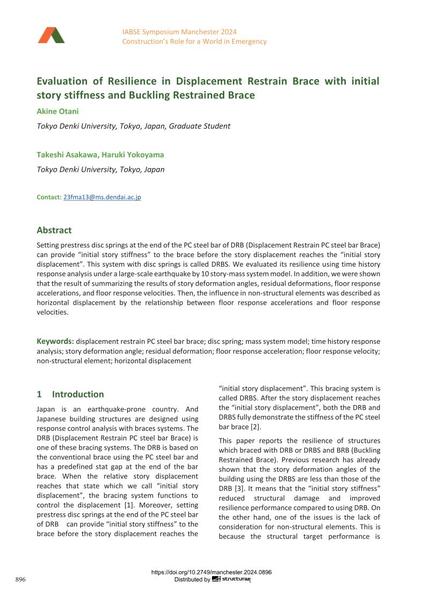Evaluation of Resilience in Displacement Restrain Brace with initial story stiffness and Buckling Restrained Brace

|
|
|||||||||||
Bibliografische Angaben
| Autor(en): |
Akine Otani
(Tokyo Denki University, Tokyo, Japan, Graduate Student)
Takeshi Asakawa (Tokyo Denki University, Tokyo, Japan) Haruki Yokoyama (Tokyo Denki University, Tokyo, Japan) |
||||
|---|---|---|---|---|---|
| Medium: | Tagungsbeitrag | ||||
| Sprache(n): | Englisch | ||||
| Tagung: | IABSE Symposium: Construction’s Role for a World in Emergency, Manchester, United Kingdom, 10-14 April 2024 | ||||
| Veröffentlicht in: | IABSE Symposium Manchester 2024 | ||||
|
|||||
| Seite(n): | 896-903 | ||||
| Anzahl der Seiten (im PDF): | 8 | ||||
| DOI: | 10.2749/manchester.2024.0896 | ||||
| Abstrakt: |
Setting prestress disc springs at the end of the PC steel bar of DRB (Displacement Restrain PC steel bar Brace) can provide “initial story stiffness” to the brace before the story displacement reaches the “initial story displacement”. This system with disc springs is called DRBS. We evaluated its resilience using time history response analysis under a large-scale earthquake by 10 story-mass system model. In addition, we were shown that the result of summarizing the results of story deformation angles, residual deformations, floor response accelerations, and floor response velocities. Then, the influence in non-structural elements was described as horizontal displacement by the relationship between floor response accelerations and floor response velocities. |
||||
